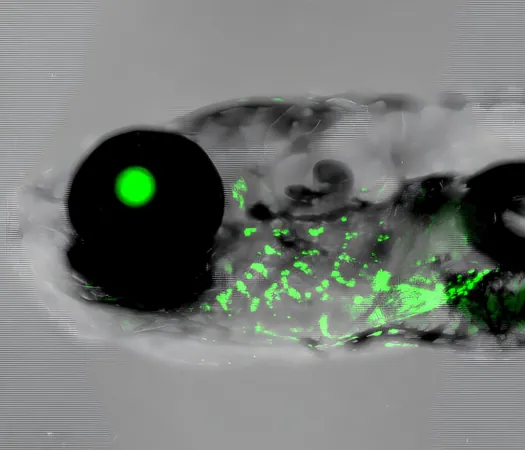
Astonishing Link Between Mammalian Outer Ears and Ancient Fish Gills Revealed!
2025-01-09
Author: Wei Ling
Groundbreaking Study by USC Stem Cell Lab
In a groundbreaking study published in *Nature*, researchers from the USC Stem Cell lab, led by Professor Gage Crump, have traced the evolutionary origins of the mammalian outer ear back to the gills of ancient fish and marine invertebrates. This revelation sheds light on one of the enduring mysteries of evolutionary biology.
For years, the outer ear, a distinctive feature of mammals, had scientists stumped regarding its origins. However, as Crump explained, "When we started the project, the evolutionary origin of the outer ear was a complete black box." Inspired by renowned evolutionary biologist Stephen Jay Gould, who famously illustrated how fish jawbones evolved into the middle ear bones of mammals, the researchers were curious if the outer ear had similarly shifted from an ancestral fish structure.
Key Breakthroughs and Discoveries
The main breakthrough came from their examination of elastic cartilage, a rare tissue type found both in gills and outer ears. "Before our study, it was unclear if fish possessed elastic cartilage," said Crump. The team was thrilled to discover that indeed, fish do feature this type of cartilage, igniting further exploration into the evolutionary connection.
Despite the evident differences in appearance and function between gills and outer ears, their lack of mineralization means they often escape the fossil record. Thus, the scientists turned to gene control elements known as enhancers, which play a crucial role in tissue development. Strikingly, when human ear enhancers were inserted into zebrafish genomes, they expressed activity in the fish's gills. Conversely, when zebrafish gill enhancers were incorporated into mice, they were active in the outer ears, suggesting a profound evolutionary relationship.
Investigating Intermediate Species
In a further exploration of this evolutionary journey, the research team investigated whether these enhancers could follow the transition from gills to outer ears in intermediate species like amphibians and reptiles. Their experiments showed that similar gene enhancers exhibited activity in tadpoles' gills, but as reptiles emerged, the elastic cartilage began to migrate toward the ear canal. Over time, these changes led to the evolution of the outer ears we recognize in early mammals today.
The Age of Elastic Cartilage
A surprising twist in the study was the age of elastic cartilage, once thought to have evolved later. The researchers discovered DNA sequences in horseshoe crab gills, indicating that this cartilage may have originated much earlier in ancient marine invertebrates, around 400 million years ago. This insight positions the elastic cartilage of gills as potentially ancestral to the cartilage found in the human outer ear.
Conclusion and Implications of the Research
This research not only unveils a fascinating chapter in evolutionary history but also demonstrates the remarkable ability of structures to adapt and change function over time. Crump concluded, "By comparing how the same gene control elements can drive the development of gills and outer ears, we introduce a new method for revealing the dynamic processes of evolution."
With this monumental discovery, scientists are one step closer to understanding the intricate ties between modern mammals and their ancient aquatic ancestors—evidence that the story of evolution continues to surprise and captivate us! Be sure to follow our coverage as new revelations unravel the mysteries of life’s complex history!
 Brasil (PT)
Brasil (PT)
 Canada (EN)
Canada (EN)
 Chile (ES)
Chile (ES)
 Česko (CS)
Česko (CS)
 대한민국 (KO)
대한민국 (KO)
 España (ES)
España (ES)
 France (FR)
France (FR)
 Hong Kong (EN)
Hong Kong (EN)
 Italia (IT)
Italia (IT)
 日本 (JA)
日本 (JA)
 Magyarország (HU)
Magyarország (HU)
 Norge (NO)
Norge (NO)
 Polska (PL)
Polska (PL)
 Schweiz (DE)
Schweiz (DE)
 Singapore (EN)
Singapore (EN)
 Sverige (SV)
Sverige (SV)
 Suomi (FI)
Suomi (FI)
 Türkiye (TR)
Türkiye (TR)
 الإمارات العربية المتحدة (AR)
الإمارات العربية المتحدة (AR)